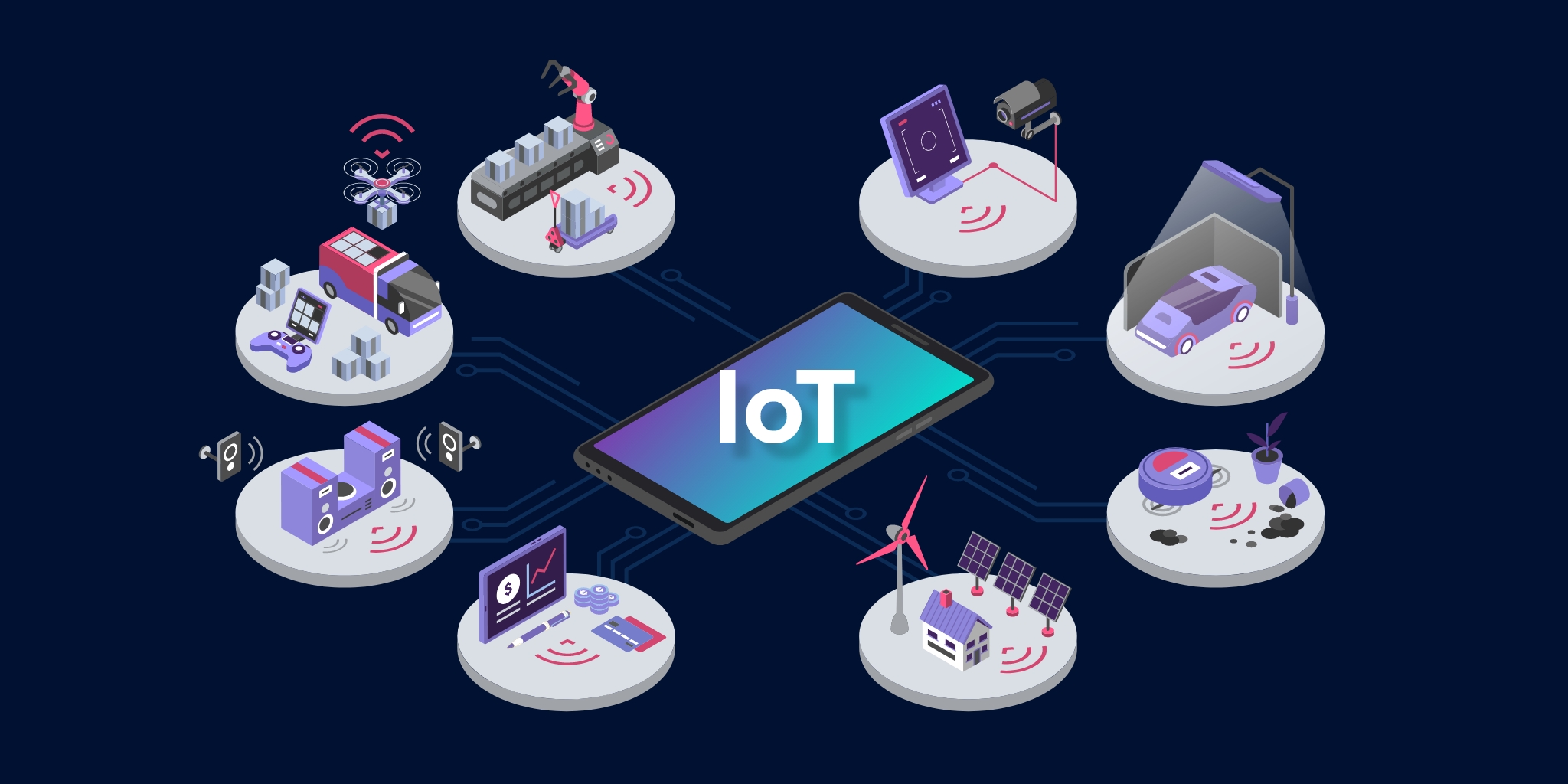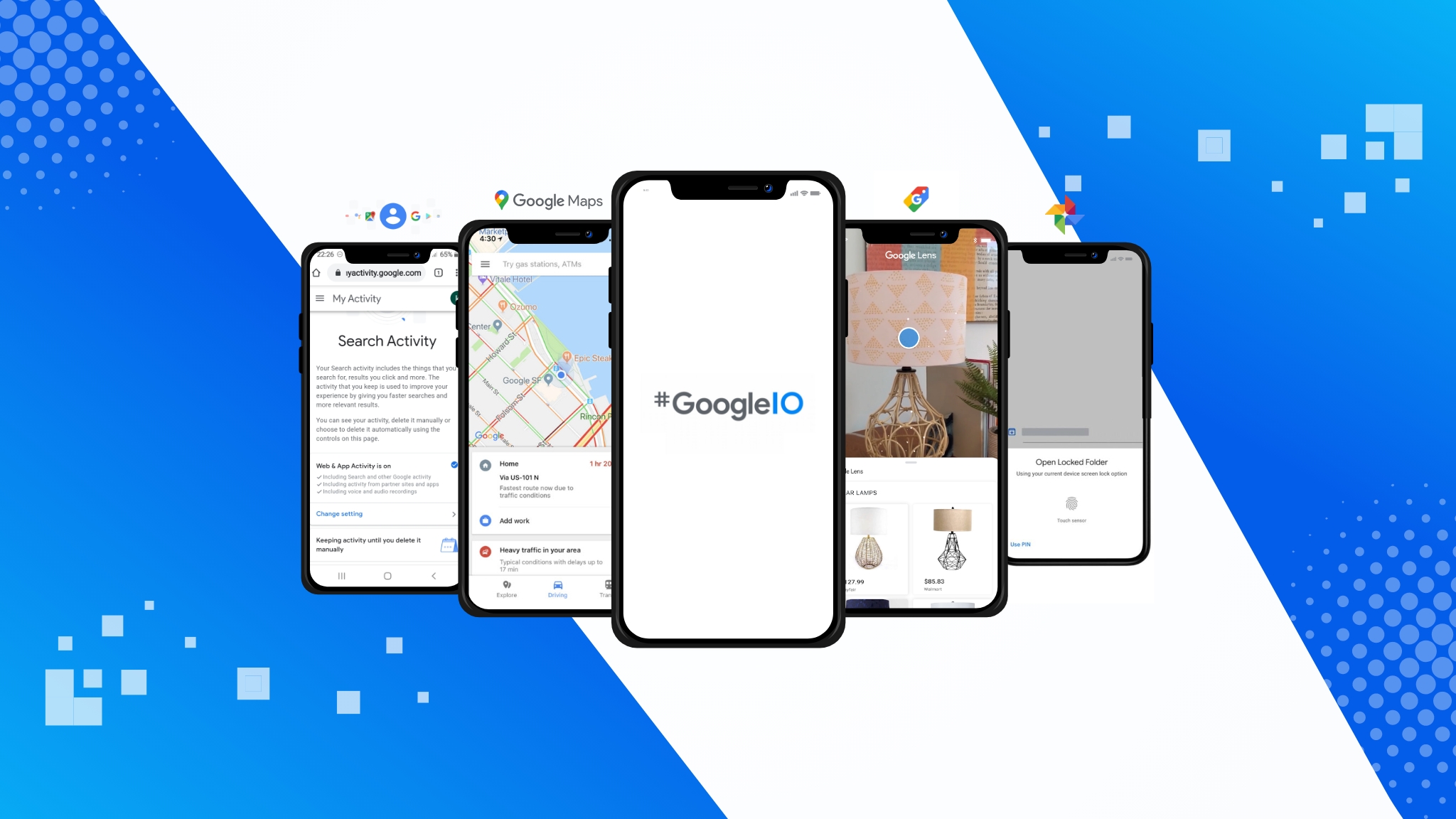Don't miss the chance to work with top 1% of developers.
Sign Up Now and Get FREE CTO-level Consultation.
Confused about your business model?
Request a FREE Business Plan.
The Rise Of Non Fungible Tokens – Benefits, Features, Risks and Scope
Table of contents
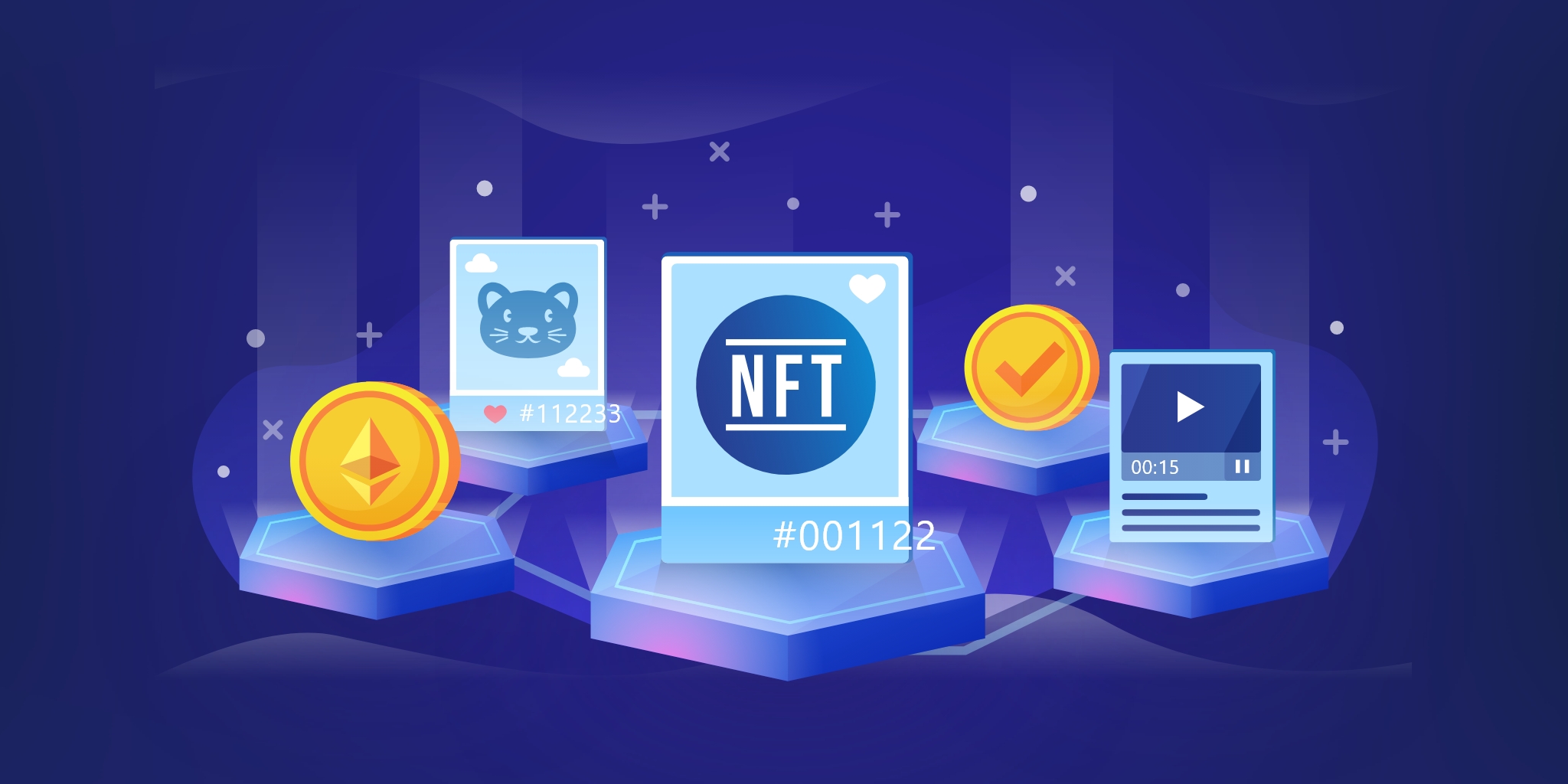
In the era where everything is digital and socially friendly, people are making maximum use of these technologies. We share so many jokes, memes, infographics, etc. with many people for entertainment or informative purposes.
But have you ever thought about how these digital properties are created or from where do they originate? The answer to all such questions is a single term – Non Fungible Tokens or NFT.
This began in 2017 when John Watkinson and Matt Hall released the first non fungible token on the American Studio Larva Labs Ethereum Blockchain. It was called Crypto Punks, then. In the same year, another project known as Crypto Kitties went viral soon after its arrival by generating investment of $12.5 million.
Further in this blog, you will get to know about non fungible tokens or NFTs, their advantages, features, use cases, risks and future scope.
What Is A Non Fungible Token?
Non fungible tokens or NFTs are digital tokens used for representing the possession of distinctive items. Items like real estate, postcards, videos, etc. can be tokenized. The items that are tokenized can have only one owner at a time as they are secured using Ethereum Blockchain which ensures one-person ownership.
NFT can also be understood as a cryptographic certificate that demonstrates the integrity and validity of the owned items. NFTs are changing with the market. It is about to launch a platform to conveniently digitize the art collections of undervalued goods and supplied collectors.
For instance, let’s talk about a food token. If you lend someone a food token, then you expect to get a food token in return. You will not be willing to accept a game token, right? Because the value of a food token will not be equivalent to the value of a game token. NFT has the same case.
A non fungible token cannot be replaced with any other token because of its speciality and rarity. Cryptocurrencies like Ethereum (ETH), Bitcoin (BTC) and other standard currencies are some examples of non fungible tokens.
These are unique assets with no value equivalent to them, other than another NFT. In layman language, $20 is equal to $20 but one NFT is not equal to another NFT. The value of an NFT is determined by how well it is welcomed by anybody who may obtain it, as is the case with cryptocurrencies like ETH.
How Are Non Fungible Tokens Created?
The process of the creation of non fungible tokens is called minting. It refers to the creation of a physical coin. NFTs are developed in an NFT marketplace, where a creator uploads a digital file and determines if it is a one-of-a-kind item. It comes in a large number of copies or is part of a series.
The NFT after creation is sold by its owner in the marketplace through an auction. Currently, the majority of NFTs are operating on Ethereum Blockchain. Other blockchains, like WAX, can create digital tokens that developers may use to link files.

How Do NFTs Work And Where They Get Their Value?
Even though Ethereum is a cryptocurrency like dogecoin or bitcoin, this blockchain also supports non fungible tokens. It enables them to store extra information and function, unlike other ETH coins. NFTs can be used for various purposes by other blockchains.
When digital media is combined with this form, it gives NFTs the qualities of scarcity and royalty to make them even more attractive.
- Scarcity: The development company you hire for developing your NFT should be responsible for the scarcity of your digital asset. For example, an event manager can decide how many tickets can be sold and similarly, the developer can decide how many replicas of an NFT can exist.
Each token will have a unique id with only one owner and the scarcity of an NFT can be determined only by the developer. A designer may want to make each NFT unique to create scarcity, or they may have good reason to produce thousands of copies. - Royalties: When a non fungible token is sold, its developers receive some royalties. Even though it is a new idea, it has proven to be powerful. The original owners of EulerBeats Originals earn an 8% royalty every time the NFT is sold. Additionally, several platforms, such as Foundation and Zora, encourage its artists to earn royalties.
How Are Non Fungible Tokens Used?
Currently, non fungible tokens are used for merchandising exclusive goods on online platforms but they can validate something that can be useful in confirming its ownership. The co-founder of Twitter auctioned his first tweet for millions of dollars.
In March 2021, he converted the money received to Bitcoin and donated the proceeds to charity. Digital products/assets may be one of a kind but objects such as sports trading cards may have several copies yet still hold value for collectors
Advantages & Benefits of Non Fungible Tokens
Non fungible tokens are trending right now and there are a lot of advantages and benefits of using NFT. Some of the advantages are:
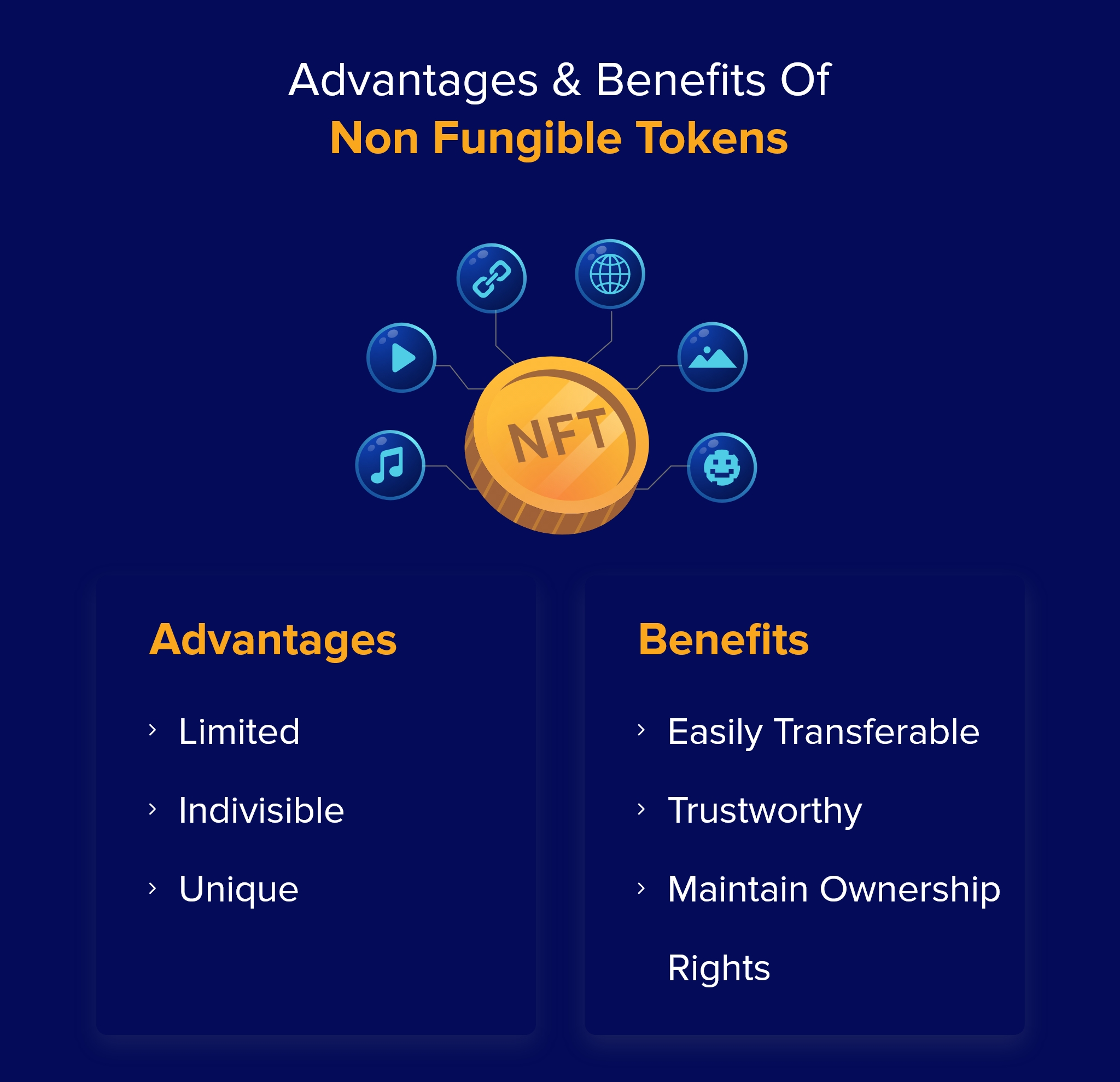
- Limited: The scarcity of NFTs adds to their value. NFT developers can produce a limitless number of non-fungible tokens, and frequently update the tokens to keep interest high.
- Indivisible: Many NFTs cannot be divided into smaller units. You will not be able to access a digital item until you pay the full amount.
- Unique: These tokens keep tabs that deliver information about their uniqueness. This data is completely accurate and secure.
Apart from these advantages, there are various benefits of non fungible tokens. Some of the benefits are discussed below:
- Easily Transferable: NFTs are sold and purchased in unique markets and their usage is exclusively based on their uniqueness.
- Trustworthy: Blockchain technology makes use of non-fungible tokens. As a result, you must be assured that your NFT is valid, as forging a decentralised and permanent record is impossible.
- Maintain Ownership Rights: This is a network of shared platforms the size of an NFT, with no buyer having the ability to edit the data afterwards.
Unique Features Of Non Fungible Tokens
The NFTs consist of unique features that make them easily accessible and handy to work with. Some of these excellent features are described below:
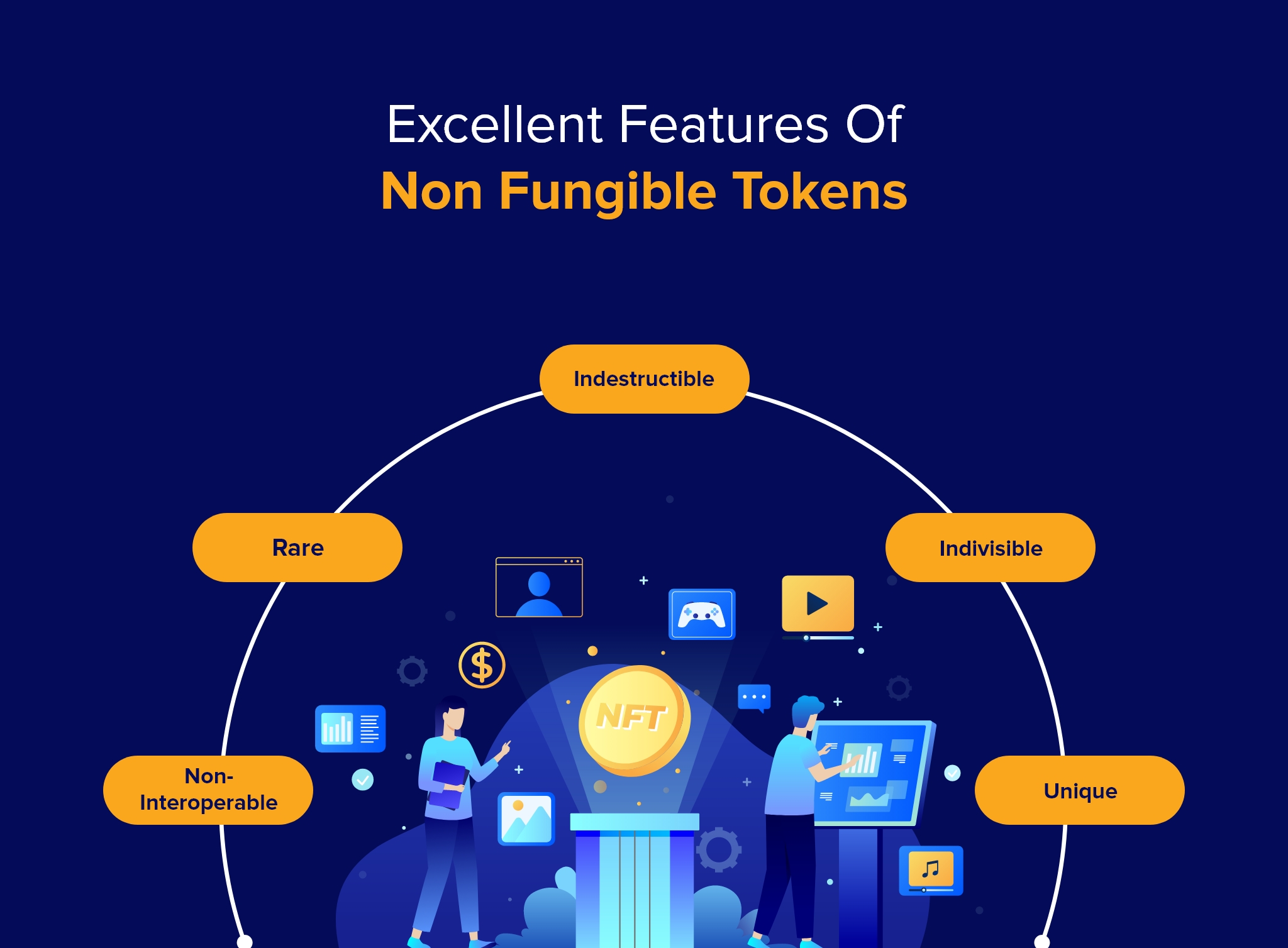
- Non-Interoperable: NFTs are deemed non-interoperable since they adhere to the ERC-721 standard, which implies the data contained in them cannot be transferred or utilised in any way.
- Rare: The overall number of NFTs in the world is currently quite low, and they are quite rare. This not only makes them uncommon, but it also increases their worth. The lesser the number of NFTs, the higher their price will be.
- Indestructible: The non fungible tokens are managed and operated through Blockchain which increases the level of security for them. This determines that these NFTs cannot be removed or destroyed, at all.
- Indivisible: Unlike other cryptocurrencies, you cannot send a portion of NFT to anyone as they are non fungible and they don’t contain a defined value. For example, one bitcoin after the transfer will have the same value, but NFT will not.
- Unique: NFTs, which are inspired by genuine art, use blockchain to stand out from the crowd and evaluate the legitimacy of a work of art. It also helps you to tell the difference between original objects and their replicas.
Use Cases Of Non Fungible Tokens
Use cases are the perfect way to determine how your product will function in the market. These demonstrate the fields in which your product may excel. There are numerous use cases of the NFTs in the marketplace. The major ones are described below:
Gaming
Many games have a virtual currency inside their gaming ecosystem that is used by users to progress in their games. In an ever-expanding unregulated market, accounts with a large number of acquired commodities are in high demand.
Players will be able to quickly exchange in-game items with sufficient validation and security, thanks to the many applications of NFTs. Hence, there is also a chance of the NFT ecosystem in the marketplace.
Digital Assets
NFTs are a perfect match for various digital assets including mock-ups, house plans, domains and themes. Furthermore, digital real estate is becoming increasingly popular in games such as Decentral Land. They let gamers buy and create a virtual world’s worth of areas. The inclusion of NFT ensures that the objects’ original producers and owners can be identified.
Identity Theft
The objects which represent identity proofs like academic records, medical proofs, etc. can use non fungible tokens to prevent identity thefts. Moreover, artists can also use NFTs to digitize their artworks to add unique copyright to them. It also aids in the differentiation of counterfeits from genuine items.
Digital Collectible
NFTs are scarce, and they’re mostly used in collections and art. The validity and ownership of a collectable or artwork may be readily verified with the inclusion of this token. This also protects an artist’s work from being copied or misused. NFT is already being used in greeting cards and goods.
Identification & Certification
NFTs are encoded with a unique collection of information on an asset or a commodity. As a result, they’re ideal for granting certificates, identities, credentials, and licences. To make it traceable back to the source, the identity or certification can be issued directly over the blockchain as an NFT.
Risks Associated with NFT
With opportunities come risks. There are a lot of risks associated with non fungible tokens that should be considered while dealing with them. Some of these risks to consider are discussed below:
Valuations
Purchasing an NFT, like any collection, is a dangerous proposition because its value is rising. Unlike the cryptocurrency Coinbase, trading cards or purchasing a real asset, NFTs are a new market, therefore there is no assurance that demand for digital assets will be similar.
If there is no market for the NFT you purchase, you risk paying an exorbitant price for something that depreciates or is just unsellable. You could even create your own NFT, but there is no guarantee that you would find a customer respective to the digitized asset. Hence, market research is necessary.
Storage
NFT sales are tracked using blockchain technology, which establishes ownership. Marketplaces and platforms like Open Sea and Rarible are where genuine NFTs are created and kept. If these platforms are shut down for any reason, there is no guarantee that you will be able to access the material.
This makes it less secure than real paintings on a wall, game tickets, or trade cards that aren’t going to vanish.
Regulation
Since NFTs are not regulated, a high level of trust is necessary. You must think that the NFT you are buying is a one-of-a-kind piece of art or work that hasn’t been duplicated elsewhere, otherwise, you risk a copyright issue.
Also, if authorities and administrators get worried about this booming industry, platforms may be shut down, and collectors’ contributions may be limited. This might lower the value of the NFT coin on the market.
Hot Potato Effect
The “hot potato” effect of NFT games is possible. The players acquire an asset to sell it for a profit, but this might result in a significant loss if the market crashes. You have a gaming sword, for example, and you want to sell it for a better price than before.
Now, as long as someone is ready to buy, you will make a profit; however, if no one is ready to buy or if the market crashes, you will lose money.
Future Scope Of Non Fungible Tokens
Whatever the hazards, NFTs have a bright future ahead of them, since the overall market reached $100 million by the end of July 2020. Experts in the crypto business even predict that NFTs will be the entrance point for 40% of new crypto users.

With the value of the decentralised finance sector approaching $4 billion, it is clear that the NFT field is going to explode in the next few years.
Conclusion
The maximum capacity of non fungible tokens (NFTs) has yet to be reached. It will be fascinating to observe how the internet, design, and fashion sectors respond. One thing is certain: NFTs aided in the identification and value of many digital artists, and the blockchain’s smart contract characteristics will be integrated into asset appraisals in the future.
By now, you must have figured that it is an early stage for the development of non fungible tokens. Hence, we can expect various platforms coming in the next few years for the development process. Reach out to the best development company to know more about non fungible token development.

Rate this article!
(5 ratings, average: 3.60 out of 5)
Join 60,000+ Subscribers
Get the weekly updates on the newest brand stories, business models and technology right in your inbox.

Lively and spirited. You may call me a tech-geek. I like to explore latest advancements in the technical areas and develop case studies. Being a computer science graduate, I like to traverse through the technical platforms as well. You can find me understanding or playing with the latest technology.

App Monetization Strategies: How to Make Money From an App?
Your app can draw revenue in many ways. All you need to figure out is suitable strategies that best fit your content, your audience, and your needs. This eGuide will put light on the same.
Download Now!Don't Know Much
About Technology?
Let our experts help you decide the right tech stack for your idea.
